You can connect to Access files and copy the tables into the Pyramid data flow. Each sheet in the given file is converted into a table. Each column within the sheet is converted into a column within the corresponding table
The Access file source supports both local file upload and pointer to a shared file on a network drive.
Provide the File
Add the Access source node to the data flow and go to its Properties panel. Start by selecting the method via which to provide the file.
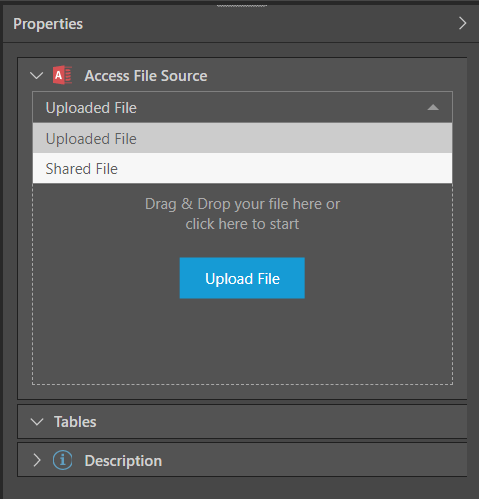
Uploaded File
Upload the file by dragging it from its folder location onto the upload widget. Alternatively, click Upload File to open your file explorer and find and select the file from its folder location.
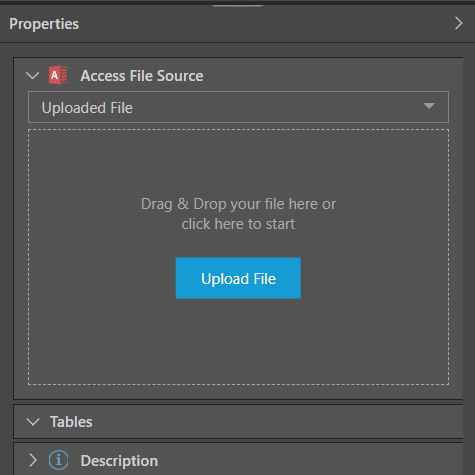
Your given file will be uploaded (green highlight below), and its tables will appear in the Tables window (yellow highlight):
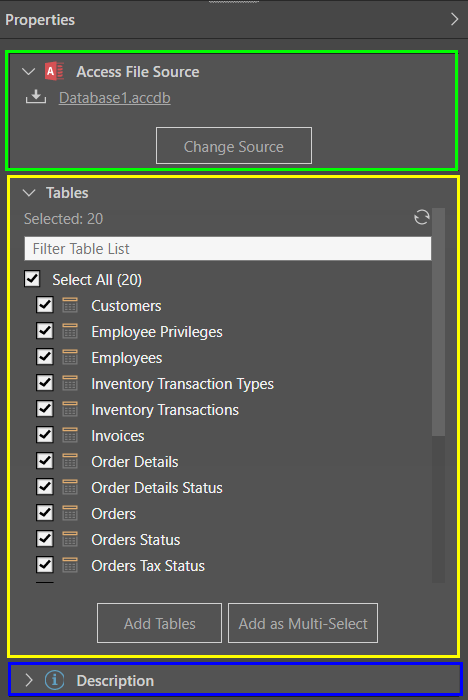
Shared File
You can provide a pointer to a shared file, rather than uploading the file into Pyramid. When the model is processed, the file is read and included in the model.
Enter the file path of the shared file (including the file name and extension) in the File Path field (green highlight below).
The shared file must use a UNC file path format to the shared directory and file on the network. The machine hosting Pyramid must have access to the shared file location. If the Pyramid services are running on different machines, the Runtime and Task Servers must be given access to the shared file location.
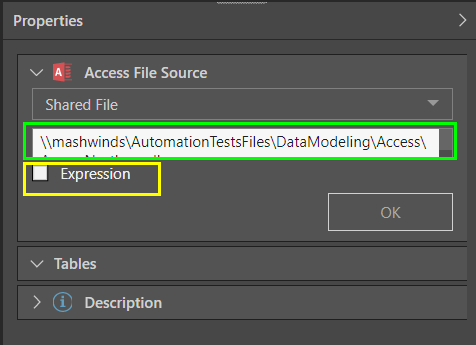
Pyramid will connect to the shared file (green highlight below), and its tables will be displayed in the Tables window (yellow highlight):
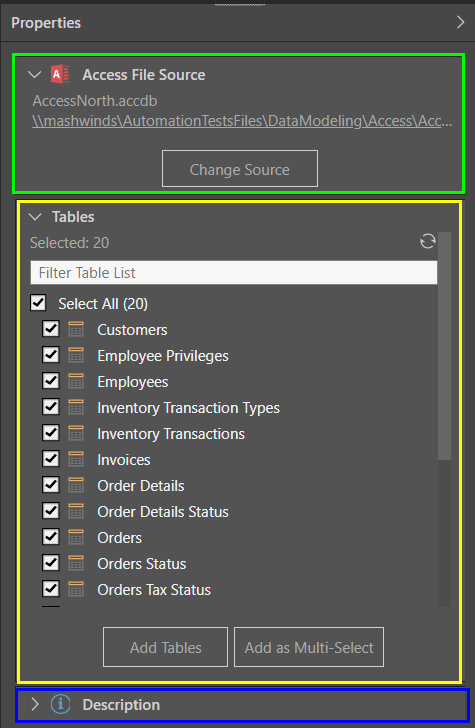
Table Selection
Once you've uploaded or connected to the file, you must copy the required tables from the data source to the data flow. The file's tables are displayed in the Tables window; select the tables that you want to include in the new data model, and then add them using the Add Tables function (green highlight below) or the Add as Multi-Select function (yellow highlight).
The 'Add Tables' function is used to assign each table to an individual node. Additional functions, operations, machine learning, and scripting nodes can then be connected to those tables. If you want to apply data cleansing and preparation to the ETL, choose this option.
The 'Add as Multi-Select' function is used to copy all tables to a single node using the multi-select function. Only a target node can be connected to the multi-select Tables node. You may want to choose this option if you don't intend to perform any data cleansing on the ETL.

Description
Expand the Description window to add a description or notes to the node. The description is visible only from the Properties panel of the node, and does not produce any outputs. This is a useful way to document the ETL pipeline for yourself and other users.
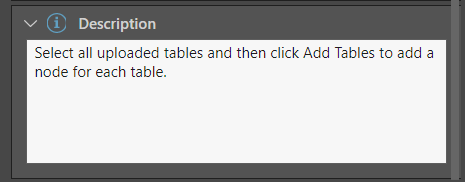
In this example, the user connected to a shared file, pasting the file path in the 'Shared 'File' field (green highlight below):

After clicking OK, Pyramid connected to the shared file (yellow highlight below), and all tables were connected to the data flow using the Add as Multi-Select function (green highlight), producing a single multi-select Tables node representing all given tables from the file:
